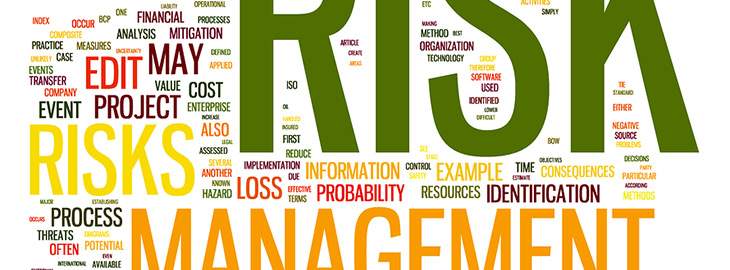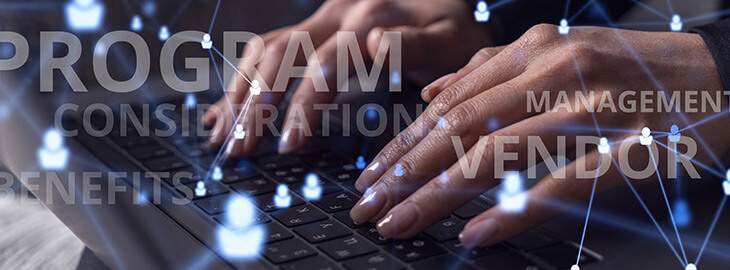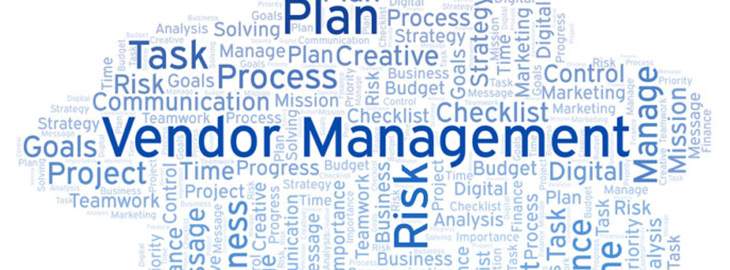
The risks that threaten your vendors and contractors threaten your company as well. Every additional party added to your supply chain expands the scope of your risk and creates more opportunities for your compliance program to fail.
Some new suppliers may be reluctant to be fully transparent with you about their own risks and security measures. Nevertheless, it’s crucial that you work with your vendors to keep all potential threats at bay. Since your suppliers operate outside of your company’s control, a plan to mitigate their risk will look and operate differently than your own risk management program.
A supplier risk mitigation plan will accept that risk from suppliers is inevitable, and then seek to minimize such risks and their adverse effects on your supply chain. When sourcing vendors, it’s important to make sure each one’s own risk program is sufficient to protect your company.
What Are the Common Types of Supplier Risk?
Lots of risks can cause supply chain disruption, and the threats can have severe consequences for your business. Some of the more common types of supplier risk are:
Cybersecurity. Hackers can attack anywhere along your supply chain, and then burrow forward into your organization. Such cybersecurity breaches can cause massive amounts of disruption to your day-to-day operations. Information security should be at the forefront of your mind when considering new vendors.
Data privacy. If your vendors and contractors have access to your customers’ data, then their privacy controls (or lack thereof) could put your clients’ sensitive information in harm’s way.
Compliance. You’ll need to ensure that your vendor can uphold whatever regulatory compliance obligations your own business has, which then flow through to your supply chain. For example, a vendor bribing foreign government officials on your company’s behalf will saddle your business with a violation of the Foreign Corrupt Practices Act and all the legal consequences that come in tow. You’ll need to ensure that your vendors meet your standards for following compliance obligations.
Legal. Compliance is not the only legal concern during this process. Your company may be compliant with all laws, but you can’t know at first glance if a vendor is cutting corners or bending rules.
Financial. The possibility of financial loss is always present when working with other companies. For example, if your contractor encounters bankruptcy or supply risks of its own, that could have serious cost repercussions for you and your company.
Reputational. Reputational risk can be the most unpredictable kind, as events that harm your reputation can often arise overnight. Damage to your contractors’ reputations can harm yours as well, and you should keep reputational risk in mind when selecting vendors.
How Do You Evaluate Supplier Risk?
Evaluating supplier risk is a critical step before embarking on an agreement with a vendor. If you are planning on entering into a relationship with another company or contractor, performing your due diligence and vetting that contractor properly can prevent threats from damaging your company in the future.
Broadly speaking, you can consider the following steps as a guideline for evaluating potential suppliers:
- Risk identification. First, examine your potential contractor and determine what key risks might be inherent to its role within your overall scope. This task can be difficult, especially with new and unfamiliar vendors. Be as thorough as you can, and identify both known risks (those you can easily prepare for) and unknown (those with unclear consequences).
- Risk assessment. This step includes categorizing, predicting the effects of, and planning responses to, the business disruptions that could be caused by your new vendor. You should also take time to investigate the risk mitigation efforts of your prospective supplier and make sure those measures meet your needs.
- Monitoring. Risk management doesn’t end after your contract has been signed. Your company must then track your supplier’s risks and how the risks are managed over time. This monitoring process should be included in your contract, so that each party knows what is expected while the agreement is in place.
How Do You Manage Supplier Risk?
Managing supplier risk is similar to managing risk within your own organization. Your strategy should include identifying potential risks, evaluating how likely the risks are and how much damage they could cause, and creating a plan to minimize damage should these events occur. You may not be able to prevent risks among your vendors, but you can plan ahead and anticipate potential threats to your own organization.
Supply chain risk management is only one part of your overall enterprise risk management strategy, and executing your overall risk plan can be an intimidating process. With all of the different areas of risk, how can you stay on top of your preventative measures?
ZenGRC’s innovative platform allows you to centralize and streamline your workflows and compliance efforts – including monitoring your vendors and contractors. This software provides you with a clear view of risk throughout your company, allowing you to track threats in real-time.
ZenGRC also provides automation, which saves time and labor and helps you maintain positive supplier relationships.Schedule a demo today to learn more about how ZenGRC can help create a successful risk management program at your company.




